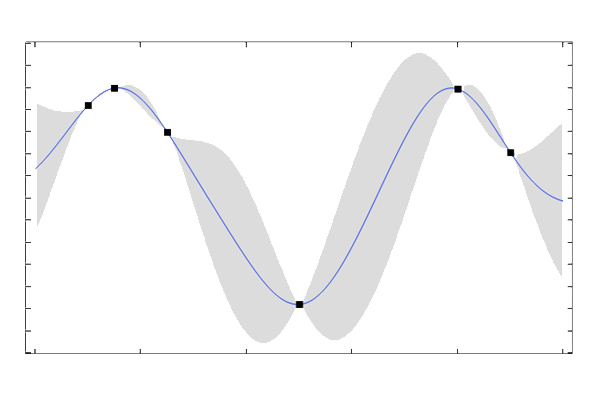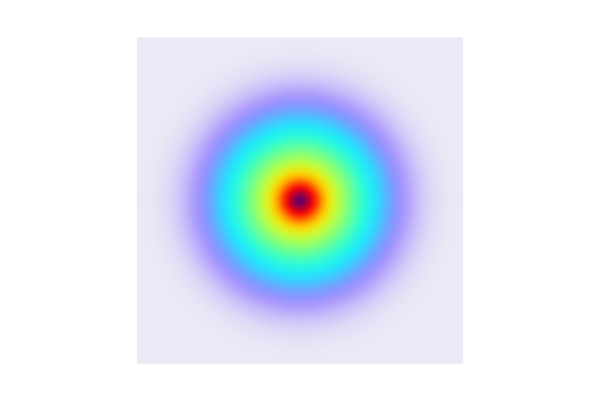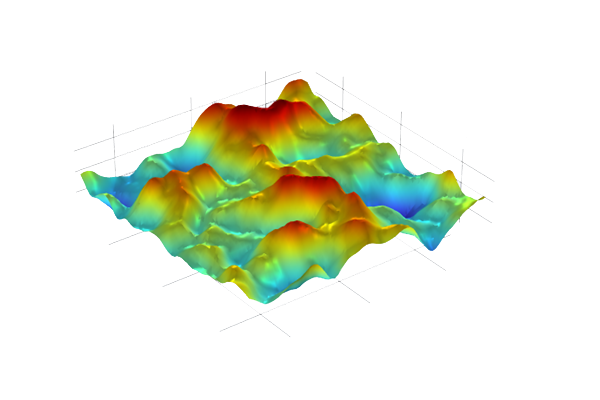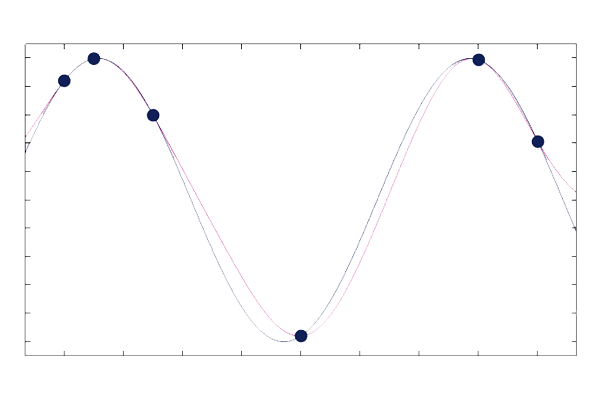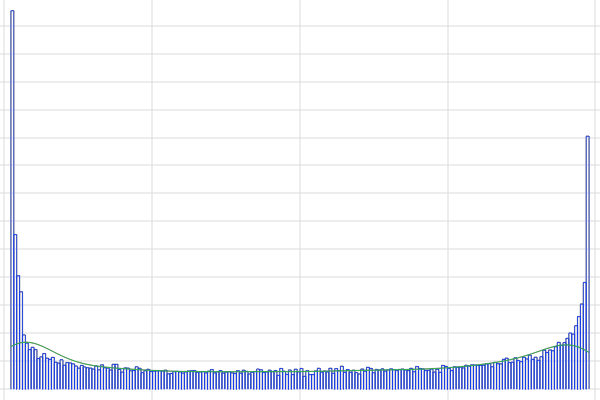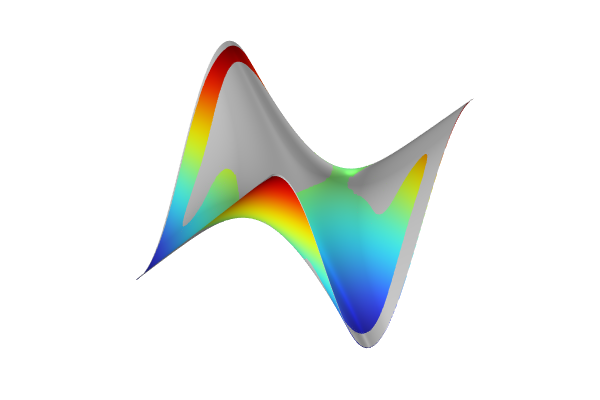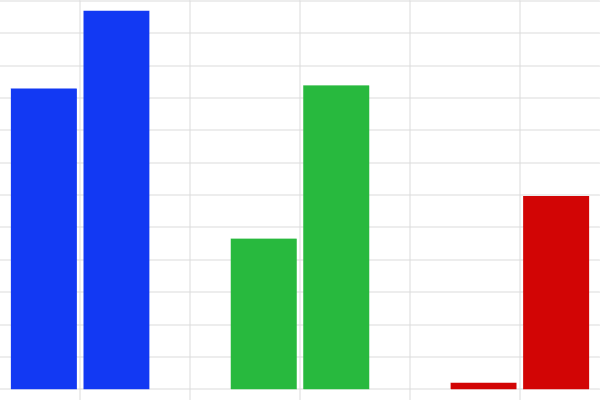More on Deep Neural Network Activation Functions
Continuing the discussion on deep neural networks (DNN) fromPart 1, here we will cover activation functions in more detail. Activation functions introduce nonlinearities in deep neural networks, which enables the network to learn and represent complex patterns in the data. Without activation functions, a DNN would behave as a linear model regardless of the number of layers, limiting its capacity to solve complex tasks. Different activation functions influence the learning dynamics and performance of the network by affecting the gradient flow during network optimization, impacting convergence speed and the ability to avoid issues like vanishing or exploding gradients. The choice of activation function can significantly affect the network's ability to generalize as well as its overall accuracy.
Deep Neural Network Activation Function Options
An activation function in a DNN defines how the weighted sum of the input is transformed into an output from a node or nodes in a layer of the network.
The available activation functions areLinear,ReLU(Rectified Linear Unit),ELU(Exponential Linear Unit),Sigmoid, andtanh. Each layer can have a different activation function.
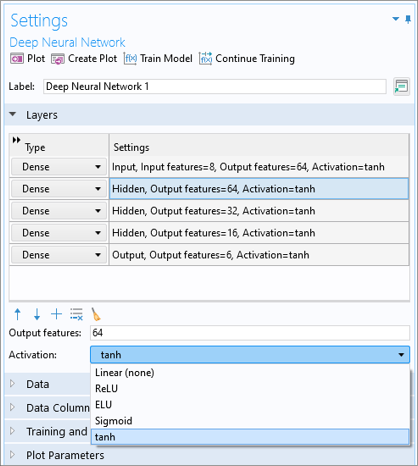
The different activation function options.
The nonlinear activation functions are designed to represent general nonlinear behavior. For example, they can represent saturation effects, which is something that, for instance, a polynomial function cannot represent. The following table describes the properties of each activation function.
| Activation Function | Expression | Graph | Properties |
|---|---|---|---|
| Linear | 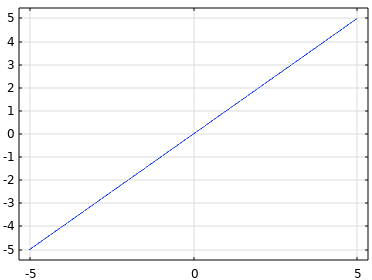 |
TheLinearactivation function is also sometimes referred to asno activation function. Its outputs are unbounded: |
|
| ReLU | 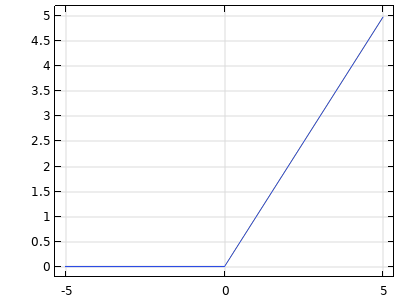 |
TheReLUactivation function is piecewise linear: zero for negative values and linear for positive values. TheReLUactivation function generates networks that are sometimes easier to train than other activation functions. Its outputs are unbounded: |
|
| ELU | 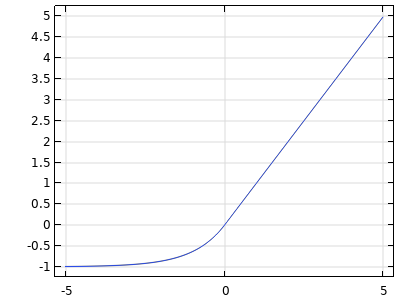 |
TheELUactivation function is similar to theReLUactivation function but is smoother and more computationally intensive. Its outputs are unbounded: |
|
| Sigmoid | 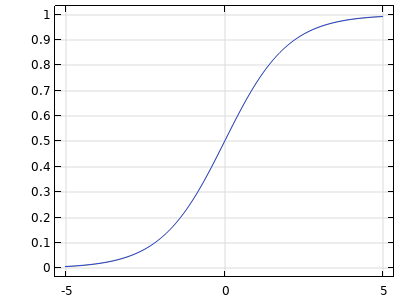 |
TheSigmoidactivation function is smoothly nonlinear and s-shaped. This activation function is mostly used for probabilities and classification. Its outputs are bounded: |
|
| tanh | 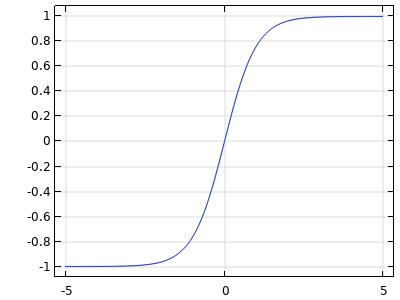 |
Thetanhactivation function is smoothly nonlinear and s-shaped. It is zero-centered and symmetric. Its outputs are bounded: |
An Analytical Expression for a Deep Neural Network Model
In principle, one can use the general-purpose parameter estimation solvers in COMSOL Multiphysics®to optimize the biases and weights of a neural network. However, this is not efficient, and in practice, it is necessary to instead use the specializedDeep Neural Networkfunction feature and theAdamoptimizer. Despite this, it can be instructive to see how such an expression would look like, at least for a small network. For thenetwork model used for the thermal actuator, withtanhactivation functions, there are 25 network parameters, and the corresponding DNN function looks like this:
dnn(x1,x2)=tanh(w3_11*(tanh(w2_11*(tanh(w1_11*(x1)+w1_21*(x2)+b1_1))+w2_21*(tanh(w1_12*(x1)+w1_22*(x2)+b1_2))+w2_31*(tanh(w1_13*(x1)+w1_23*(x2)+b1_3))+w2_41*(tanh(w1_14*(x1)+w1_24*(x2)+b1_4))+b2_1))+w3_21*(tanh(w2_12*(tanh(w1_11*(x1)+w1_21*(x2)+b1_1))+w2_22*(tanh(w1_12*(x1)+w1_22*(x2)+b1_2))+w2_32*(tanh(w1_13*(x1)+w1_23*(x2)+b1_3))+w2_42*(tanh(w1_14*(x1)+w1_24*(x2)+b1_4))+b2_2))+b3_1)
In this expression, the variablesw1_11,w1_12, etc., are the network weights and the variablesb1_1,b1_2, etc., are the network biases. The figure below shows the network represented as a graph, with the biases and some of the weights shown:
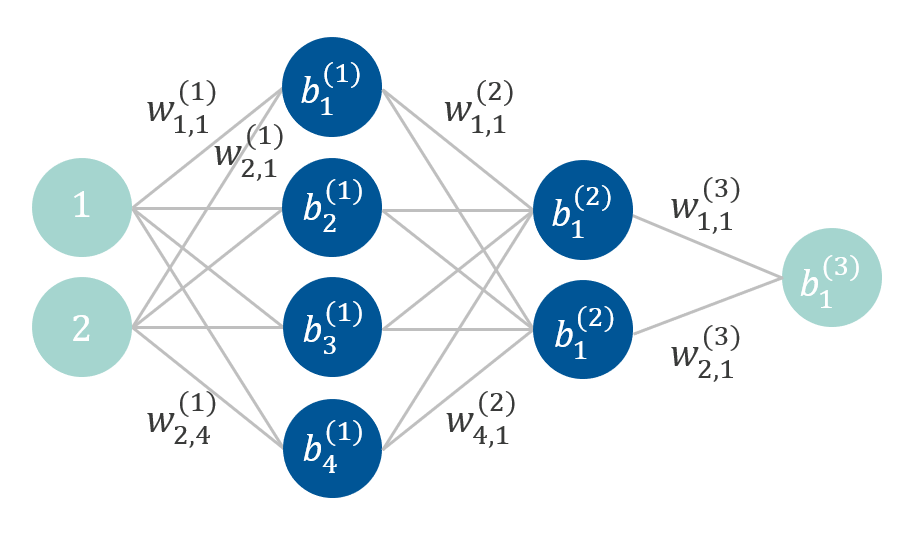
The neural network architecture for the thermal actuator model.
Their optimized values are listed in the table below and are based on scaled input data. The data needs to be scaled before the network can be optimized, since the network uses thetanhactivation function, and the output values oftanhare limited to. This is a very small network, and it is easy to see that for a larger, but still small, network, such as a
, having 4321 network parameters, managing this type of expression is not practical. In the COMSOL implementation, such expressions are never explicitly formed, but the network evaluations are handled at a lower level. In addition, the scaling before and after the computation is handled automatically.
| w1_11 | w1_12 | w1_13 | w1_14 |
|---|---|---|---|
| 6.479052 | -83.5153 | -740.349 | 1028.273 |
| w1_21 | w1_22 | w1_23 | w1_24 |
| -0.01446 | -2.50149 | 0.217145 | -0.23627 |
| b1_1 | b1_2 | b1_3 | b1_4 |
| -0.03275 | 9.940952 | -2.92705 | 2.314871 |
| w2_11 | w2_12 | w2_21 | w2_22 |
| 1.882123 | 131.0688 | 0.004636 | -0.17448 |
| w2_31 | w2_32 | w2_41 | w2_42 |
| -235.551 | -211.39 | -61.658 | -81.0836 |
| b2_1 | b2_2 | ||
| -175.955 | -115.824 | ||
| w3_11 | w3_21 | ||
| -141.037 | -148.391 | ||
| b3_1 | |||
| 8.237812 |
Using the ReLU and Linear Activation Functions for Regression
For regression tasks, as an alternative to using thetanhactivation function, a combination of theReLUandLinearactivation functions can be used. This will result in a function approximation that is piecewise linear. For example, for thenetwork used for the function surface regression model (developed inPart 2of the Learning Center course on surrogate modeling), you can use a configuration with aReLUactivation function in all layers except for the last, where aLinearactivation is used, as shown below:
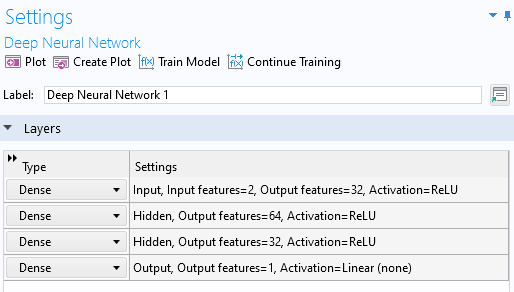
The network layer configuration usingReLUandLinearactivation functions.
In this case, theLearning rateis lowered to 1e-4, and theNumber of epochsis set to 10,000.
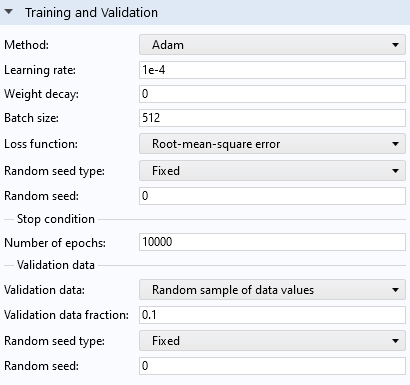
TheTraining and Validationsection settings for the network using theReLUandLinearactivation functions.
 A line graph containing one blue line and one green line with the epoch number on the x-axis and loss value on the y-axis.
A line graph containing one blue line and one green line with the epoch number on the x-axis and loss value on the y-axis.
Convergence plot for the network using theReLUandLinearactivation functions.
This network is easier to train but gives a larger loss than when using thetanhactivation function. A certain level of overfitting is seen in this case. When using theReLUandLinearactivation functions, the resulting surface is piecewise linear with resolution determined by the size of the network, as shown in the figures below for a few different network configurations. The network configurations used are,
, and
. Reducing the model complexity further results in underfitting.
 A rainbow-colored, smooth surface plot with a few hills and valleys.
A rainbow-colored, smooth surface plot with a few hills and valleys.
The function surface when theReLUandLinearactivation functions are used for anetwork.
 A rainbow-colored, smooth surface plot with a few hills and valleys.
A rainbow-colored, smooth surface plot with a few hills and valleys.
The function surface when theReLUandLinearactivation functions are used for anetwork.
 A rainbow-colored, smooth surface plot with a few hills and valleys.
A rainbow-colored, smooth surface plot with a few hills and valleys.
The function surface when theReLUandLinearactivation functions are used for anetwork.
If we use a very simplenetwork, we get an underfitted model. The loss stalls at a relatively high level of about 0.2, as seen in the convergence plot below.
 This is not the greatest caption in the world. A line graph containing a blue line and green line with the epoch number on the x-axis and loss value on the y-axis.
This is not the greatest caption in the world. A line graph containing a blue line and green line with the epoch number on the x-axis and loss value on the y-axis.
The convergence of anetwork stalls at a loss value of 0.2.
The network complexity is too low to accurately represent the data. The resulting neural network function is a virtually constant function when using the same solver parameters. This is shown below.
 A rectangular surface plot in 3D space with a rainbow color distribution, of which the majority is a dark red color.
A rectangular surface plot in 3D space with a rainbow color distribution, of which the majority is a dark red color.
The underfitted network model results in a virtually constant function.
You can observe this firsthand in the model file for theReLUandLinearactivation functions,here.
请提交与此页面相关的反馈,或点击此处联系技术支持。




